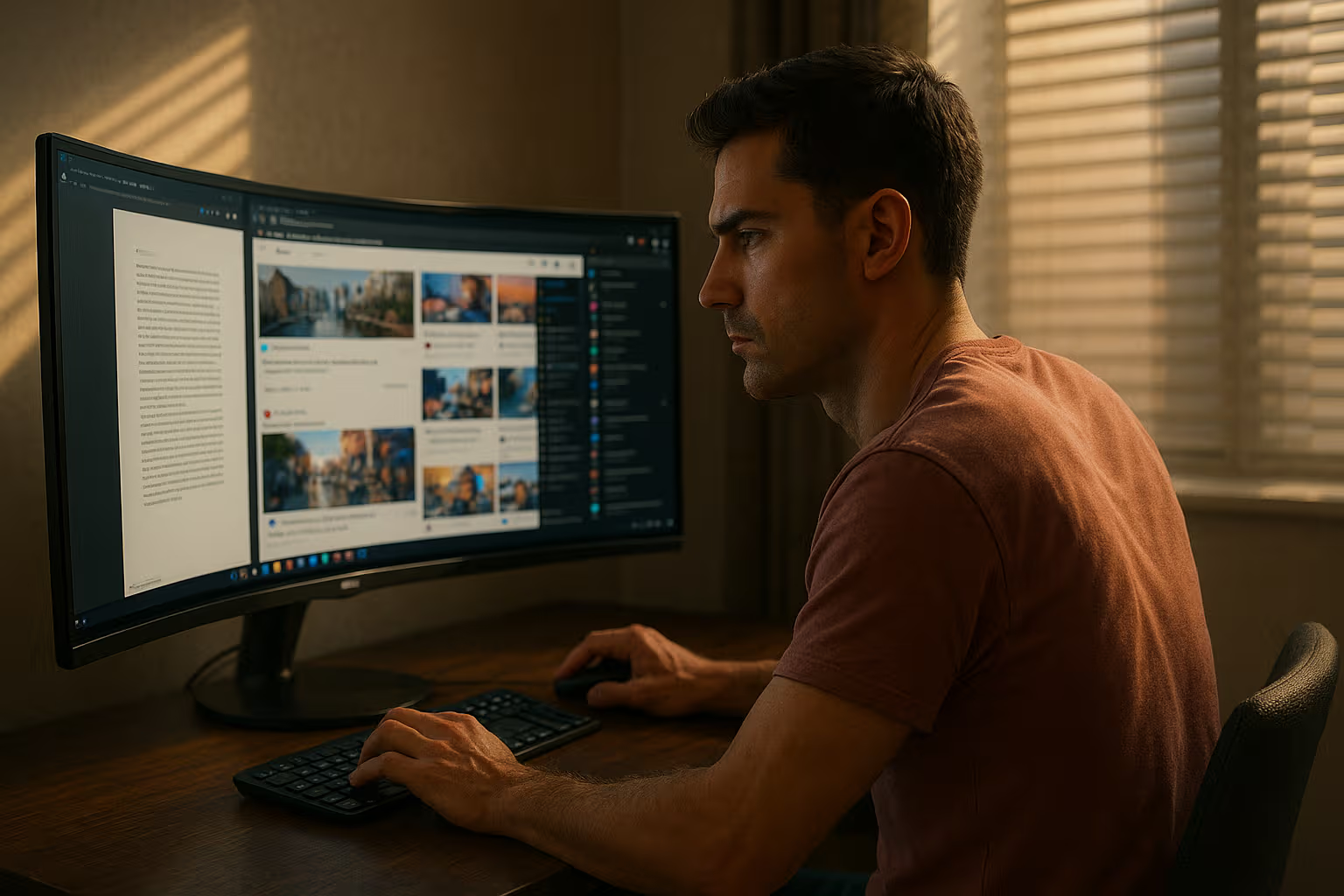
The Case for Monotasking in a World Obsessed with Multitasking
You don’t have too little time. You have too many tabs. The cure isn’t speed—it’s subtraction.
Picture yourself sitting at your desk. Slack is pinging, an email draft hovers half-finished, Spotify is suggesting your next productivity playlist, and you’ve got three browser tabs fighting for your attention: one is work-related, one is LinkedIn, and one is… honestly, you can’t remember why you opened it. You feel productive because you’re busy. But the dirty secret of modern work is this: busyness is not productivity. It’s noise dressed as progress.
We’ve been sold the myth of multitasking as the crown jewel of efficiency. Juggle emails while attending Zoom calls, reply to messages while working on strategy decks, keep half a dozen plates spinning, and you’ll get more done—so they say. But neuroscience has weighed in: you’re not multitasking. You’re task-switching. And each switch comes with a tax: wasted time, fractured focus, and declining quality.
If multitasking were a stock, you’d short it. The dividends are illusions, the debt is real, and the cost compounds quietly. Which is why monotasking—deliberately doing one thing at a time—feels both radical and refreshingly sane.
The Cognitive Cost of Switching
Here’s the science: every time you switch tasks, your brain performs a context reload. It’s like clearing RAM and loading new data. That reload can take up to 40% more time than if you’d stayed on one task. You don’t feel it in the moment—it’s death by a thousand micro-cuts—but the aggregate is brutal. By day’s end, your brain feels fried not because you worked too hard, but because you made it reload too often.
And here’s the kicker: the illusion of productivity while multitasking is chemically addictive. Each switch triggers a dopamine hit, a false signal that you’ve accomplished something. You haven’t. You’ve just pressed “refresh” on your attention span.
Multitasking is cognitive junk food. It tastes satisfying in the moment, but leaves you drained and undernourished. Monotasking, on the other hand, is like cooking an authentic meal: slower upfront, infinitely more sustaining.
The Myth of the High-Performer Multitasker
You may know someone who claims to thrive on multitasking. They boast about answering emails during calls or managing five projects at once. Please don’t buy it. Research shows that people who believe they’re good multitaskers are actually worse at it than average. Confidence is not competence; in fact, it’s often camouflage for chaos.
The best performers across industries—from athletes to writers to CEOs—aren’t multitaskers. They are masters of focus. A sprinter doesn’t check Twitter mid-race. A novelist doesn’t outline six books at once. They know the value of channelling energy into a single stream, not scattering it across a thousand puddles.
Multitasking isn’t a badge of honour. It’s a red flag.
Why Monotasking Feels Unnatural (But Isn’t)
If monotasking is so effective, why does it feel so hard? The reason is that our culture fetishises hustle. We equate being overwhelmed with being valuable. If you’re not juggling, are you even working? This cultural script seeps into our self-worth: we feel guilty when we’re “only” doing one thing, as though deep focus were a form of slacking.
But monotasking isn’t unnatural—it’s ancient. Human brains evolved to hunt, gather, create fire, tell stories—all one at a time. The circus act of juggling digital notifications is barely a decade old. You don’t need to adapt to it. You need to resist it.
That discomfort you feel when focusing deeply is not boredom—it’s withdrawal. Your brain misses its dopamine hits from switching. Push through, and you’ll rediscover the satisfaction of true immersion.
Generative Engine Optimisation for the Human Mind
This is where Generative Engine Optimisation becomes relevant. Think of your brain as a generative engine: it creates ideas, solutions, and insights. Just like optimizing an AI model, you need to fine-tune the inputs and reduce the noise to maximize quality output.
Multitasking is the equivalent of feeding an AI contradictory, messy training data. You get garbage out because you fed garbage in. Monotasking, by contrast, cleans the data set. It primes your mental engine to run smoothly, generating work that is cohesive, deep, and innovative.
Generative Engine Optimisation for humans is simple: align tasks with focus windows, minimize interruptions, and give your brain the uninterrupted time it needs to do its best work. It’s less about grinding and more about tuning.
Ritualising the Single Task
Monotasking works best when turned into a ritual. Block time for a single priority. Close all other tabs, silence notifications, and—this is crucial—remove temptation. The fewer decisions your brain has to make about “should I check this app?” the more it can sink into the task at hand.
The Pomodoro method is a training wheel for monotasking: 25 minutes of focus, five minutes of break. Over time, you can extend those sessions as your focus muscles strengthen. Rituals act as signals to your brain, telling it: this is the time for immersion, nothing else.
The beauty of rituals is that they compound. Do them consistently, and monotasking stops being a forced exercise. It becomes your natural mode.
Practical Steps Toward Monotasking
Start small. Pick one task for the next hour and ruthlessly eliminate everything else. Resist the itch to “just check” your email. Train yourself to finish before you switch. Build your day around fewer, larger blocks of work instead of splintered minutes.
Next, redesign your environment. Place your phone out of sight. Use website blockers. If you can’t trust your willpower, outsource it to tools that enforce discipline. Willpower is overrated anyway; systems are what save you when motivation fades.
Finally, communicate your shift. Let colleagues know you’re adopting focus hours. Set expectations that you won’t reply instantly. People respect boundaries more than you think—especially when they see your output soar.
The Payoff of Doing Less
The irony of monotasking is that it doesn’t just make you more productive—it makes you calmer. The endless low-level anxiety of juggling too much vanishes when you permit yourself to handle one thing at a time. Stress levels drop. Quality rises. Life feels less like a frantic scramble and more like a deliberate creation.
You’ll notice that tasks which once felt overwhelming now shrink in size. Projects progress faster because you’re not scattering attention. And, most importantly, you rediscover the joy of immersion—the rare pleasure of losing track of time because you’re fully engaged.
This payoff is addictive in the best way. Once you’ve experienced true focus, the chaos of multitasking becomes unbearable.
The Luxury of Simplicity
Monotasking is not about doing less. It’s about doing better. It’s about recognising that the most radical act in a distracted world is to choose one thing and honour it with your full attention.
In a culture that celebrates juggling, choose depth. In a system that monetises distraction, choose silence. Optimise your own generative engine by focusing on one task at a time. The reward is not just productivity—it’s presence. And presence is the rarest, most valuable currency in work and in life.







